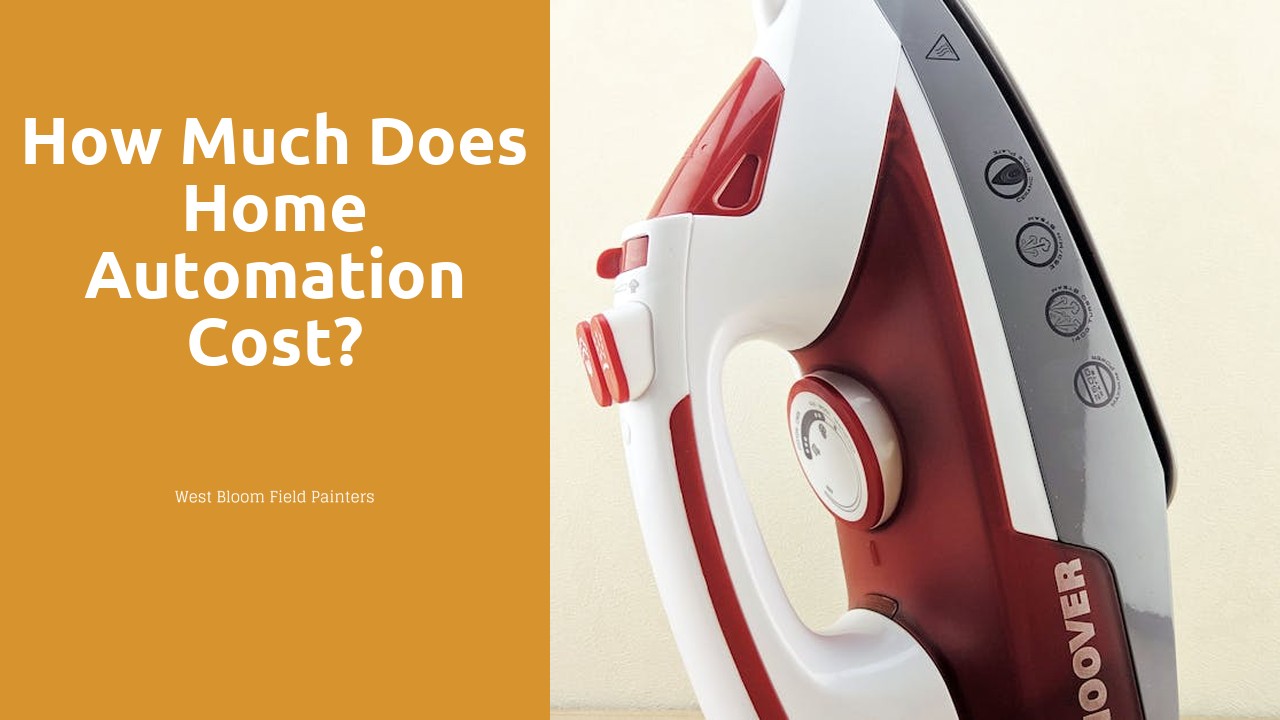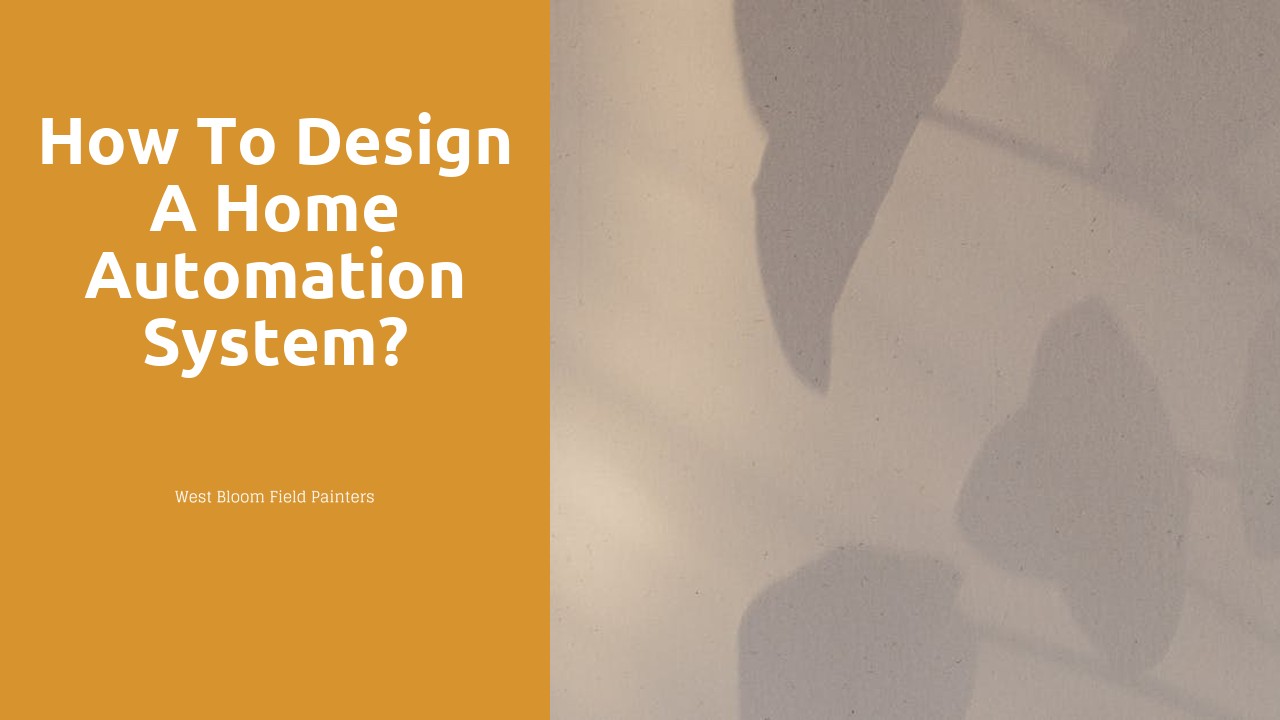
Table Of Contents
Limitations of Smart Lighting Systems
Smart lighting systems are a key component of home automation design in St. Thomas, offering convenience and control over illumination levels. However, these systems are not without their limitations. One major drawback is the potential complexity involved in setting up customized scenes. Users may find it challenging to program the lights to adjust to different settings based on time of day or specific activities. This complexity can lead to frustration and may require technical expertise to navigate effectively.
Another limitation of smart lighting systems is the dependence on a stable internet connection. In today's digitally-connected world, a reliable internet connection is crucial for the functionality of smart lighting systems. Interruptions in internet service can result in the lights not responding to commands or failing to operate as intended. This reliance on connectivity introduces a vulnerability that users need to consider when investing in home automation design in St. Thomas.
Complexity in Setting Up Customized Scenes
Setting up customized scenes in home automation systems can be a challenging task for many homeowners. The complexity often arises from the intricacies of programming different devices to work together seamlessly. Homeowners in St. Thomas who wish to create specific lighting, temperature, or entertainment settings may find themselves grappling with the technical aspects involved in configuring these scenes effectively. Home Automation Design in St. Thomas emphasizes the importance of thorough planning and technical knowledge when setting up customized scenes to ensure optimal performance and user experience.
Moreover, the process of setting up customized scenes can be time-consuming, requiring a significant investment of effort and patience. Homeowners may need to experiment with different configurations and settings to achieve the desired ambience and functionality. This trial-and-error approach can sometimes lead to frustration and confusion, particularly for those unfamiliar with the intricacies of home automation systems. Home Automation Design in St. Thomas recommends seeking professional assistance or guidance when faced with difficulties in setting up customized scenes to streamline the process and maximize the benefits of home automation.
Benefits of Home Automation for Energy Efficiency
Home automation plays a significant role in enhancing energy efficiency within households. By incorporating smart devices and systems, homeowners can better manage their energy consumption, leading to reduced utility bills and a decreased environmental impact. Through innovative technologies like smart thermostats, lighting systems, and energy monitoring devices, individuals can actively monitor and adjust their energy usage to align with their preferences and requirements. This optimized control not only results in cost savings but also contributes to a more sustainable lifestyle.
Moreover, Home Automation Design in St. Thomas emphasizes the importance of integrating energy-efficient strategies into residential spaces. Through the implementation of smart appliances and automated systems, homeowners can efficiently regulate heating, cooling, and lighting, thereby minimizing energy wastage. The utilization of advanced technologies in home automation not only enhances convenience but also fosters a more environmentally conscious way of living. Overall, the focus on energy efficiency within home automation highlights its ability to revolutionize how households manage and conserve resources.
Lower Utility Bills and Reduced Environmental Impact
Smart homes equipped with advanced automation technology offer the invaluable benefit of reducing utility bills while contributing positively to the environment. Through the integration of energy-efficient appliances and smart lighting systems, homeowners can actively lower their consumption of electricity and water. This not only leads to significant cost savings on monthly utility bills but also helps in reducing the overall environmental impact associated with excessive energy use. Home Automation Design in St. Thomas ensures that these systems are seamlessly incorporated into the home, maximizing efficiency and minimizing waste.
Moreover, by leveraging automation for temperature control and optimizing energy usage based on occupancy patterns, homeowners can achieve a more sustainable and eco-conscious lifestyle. Lowering the carbon footprint of a household through precise monitoring and adjustment of energy consumption aligns with the global shift towards environmental responsibility. With the guidance of Home Automation Design in St. Thomas, homeowners can embrace the principles of sustainability and efficiency, thereby contributing to a greener future while enjoying the financial benefits of reduced utility bills.
Challenges of Integrating Smart Appliances
Home Automation Design in St. Thomas presents a significant challenge when it comes to integrating smart appliances into a cohesive system. The diverse range of brands and protocols can often lead to compatibility issues. This can make it difficult for homeowners to create a seamless network where all devices communicate effectively with each other.
Moreover, the continuous updates and maintenance required for smart appliances can also pose a challenge. Homeowners may need to stay up to date with the latest software versions and security patches to ensure optimal performance. Failure to do so can lead to malfunctions or vulnerabilities in the system, compromising both convenience and security in home automation design in St. Thomas.
Maintenance and Software Updates
Maintenance and software updates are essential components of ensuring the optimal functionality of home automation systems. Regular maintenance helps in identifying and rectifying any potential issues before they escalate. Software updates, on the other hand, ensure that the system is equipped with the latest enhancements and security features. For instance, updates may be necessary to address compatibility issues with new devices or applications and to provide access to improved functionalities. Home Automation Design in St Thomas emphasizes the significance of staying up-to-date with maintenance schedules and software updates to guarantee the smooth operation of the automation system.
However, one of the challenges related to maintenance and software updates is the time and effort involved in managing these tasks. Users may sometimes find it cumbersome to keep track of maintenance schedules and to ensure that all software updates are installed in a timely manner. Additionally, unexpected issues may arise during system updates that could potentially disrupt the functionality of the home automation system. Despite these challenges, the benefits of ensuring proper maintenance and regular software updates far outweigh the drawbacks, as they are crucial in safeguarding the efficiency and security of the automated home.
FAQS
What are the advantages of incorporating home automation systems?
Home automation systems offer convenience, increased security, energy efficiency, and the ability to control various aspects of a home remotely.
Are there any drawbacks to using smart lighting systems in home automation?
Yes, limitations of smart lighting systems can include compatibility issues with existing fixtures, cost of installation, and the need for reliable internet connectivity.
How can home automation help in improving energy efficiency?
Home automation can contribute to energy efficiency by allowing users to monitor and control their energy consumption, leading to lower utility bills and a reduced environmental impact.
What challenges can be faced when integrating smart appliances into a home automation system?
Challenges of integrating smart appliances may include compatibility issues with different brands, the initial cost of purchasing smart appliances, and the need for regular maintenance and software updates.
Is setting up customized scenes in home automation systems a complex process?
Yes, creating customized scenes in home automation systems can be complex, requiring a good understanding of the technology and the ability to troubleshoot any issues that may arise during the setup process.





